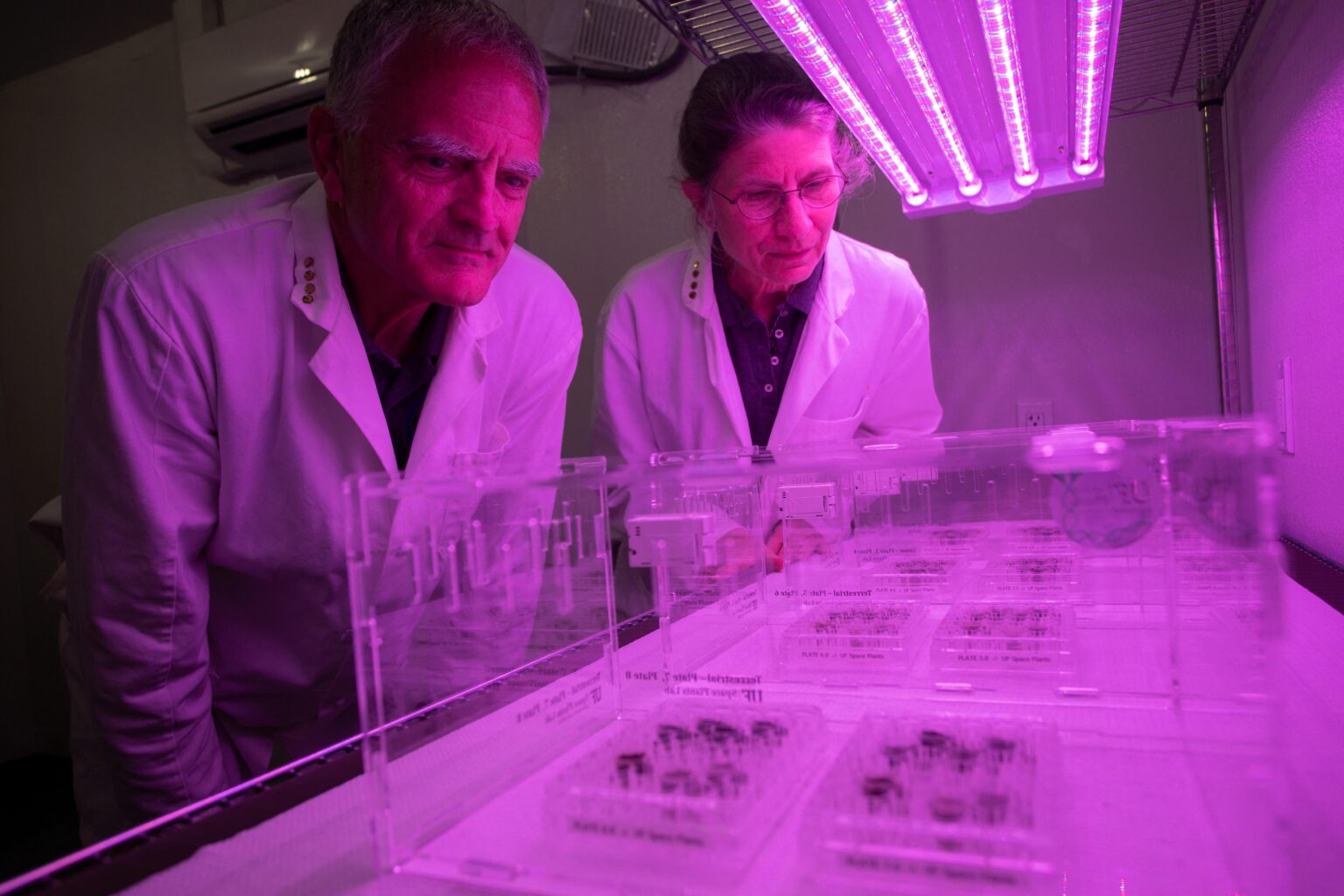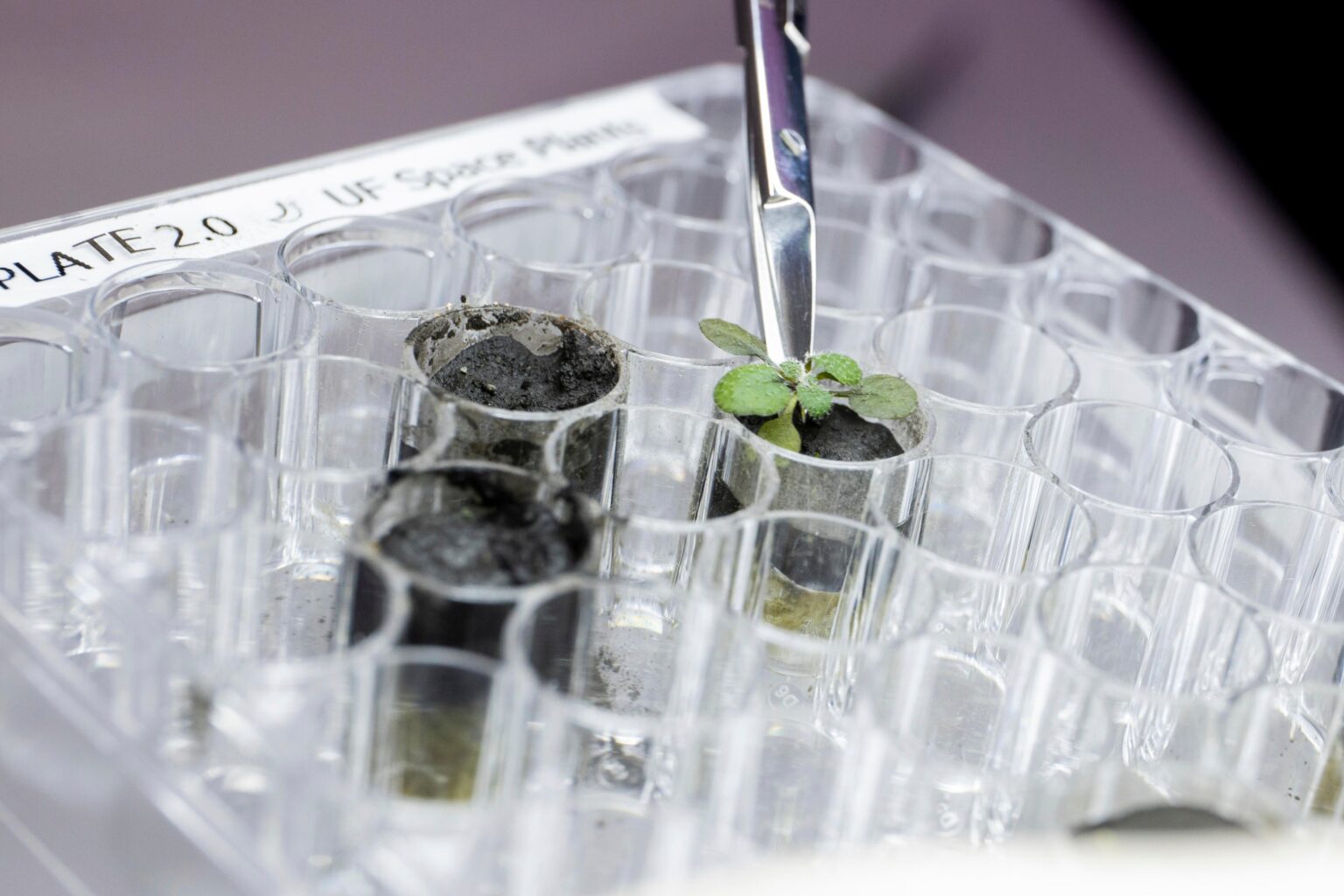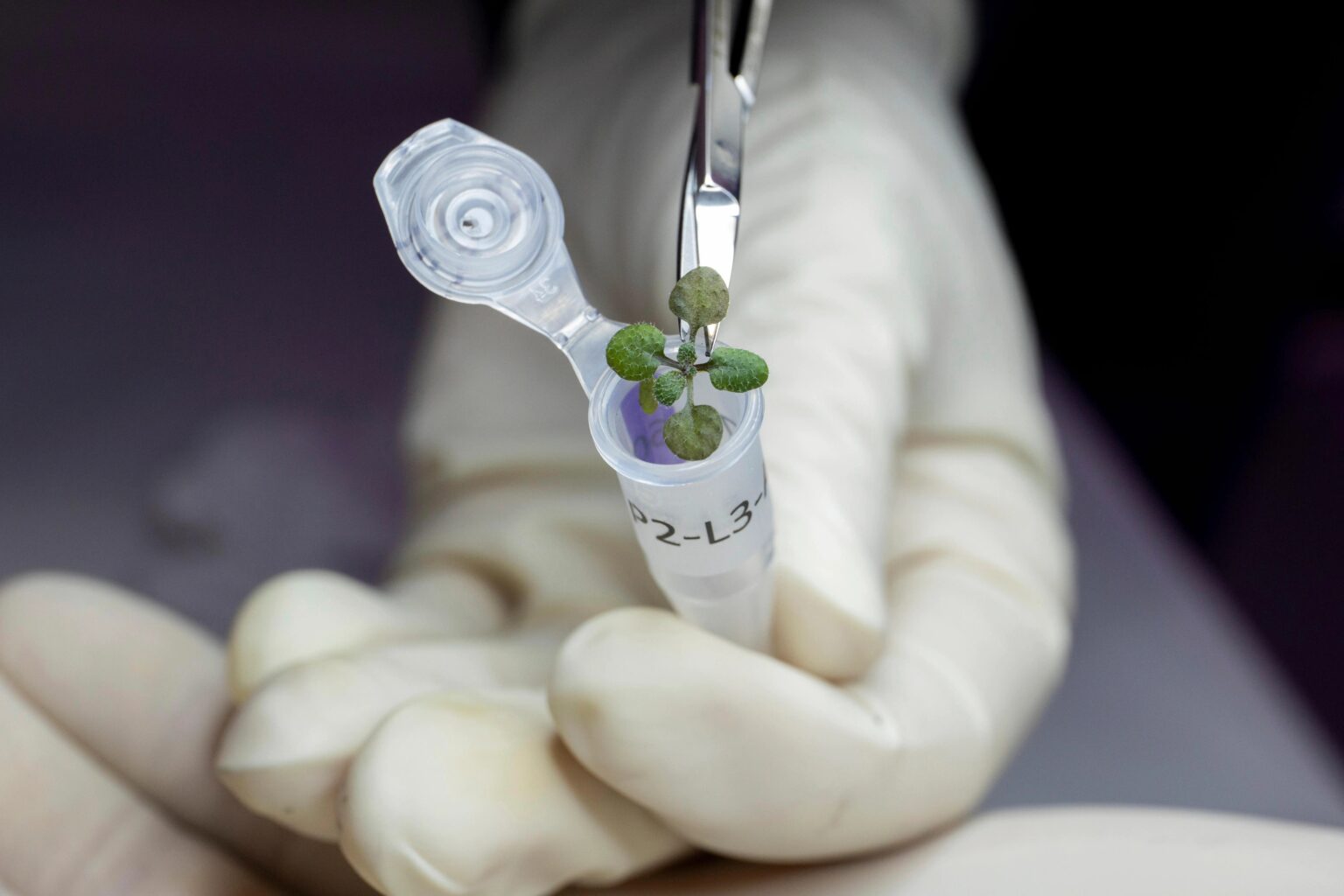Scientists from the University of Florida have successfully grown a plant in the lunar soil for the first time. This achievement will help future colonists on the Moon to grow their crops to survive far from Earth without additional food sources.

To conduct the experiment, scientists Rob Ferl and Anna-Lisa Paul convinced NASA to provide them with samples of lunar regolith collected in different places on the Moon during three Apollo missions held five decades ago. After long negotiations, the scientists managed to get some regolith. Then they placed the seeds of the hardy Arabidopsis thaliana in tiny samples of nutrient-poor lunar regolith and waited to see if anything would happen.
Amazing result
To the pleasant surprise of scientists, green shoots appeared after two days. However, on the sixth day it became clear that the plants were very weak compared to the control group planted in the volcanic ash of the earth. For example, plants in the lunar regolith grew slower and had stunted roots, and some leaves quickly began to dry out and became covered with reddish pigmentation.

On the 20th day, just before the plants began to bloom, the team collected them, crushed and studied the RNA present in all living cells and having a structural similarity to DNA. The results confirmed that the plants were really stressed and reacted similarly as if the Arabidopsis had grown in harsh conditions on Earth, for example, in soil with an abundance of salt or heavy metals.
Important for space travel
The team now plans to use the same regolith to plant more seeds in it and find out if the original plants had any effect on the lunar material. In other words, to understand whether the soil has become more favorable after germination of plants in it before.

The study is very important for NASA, which is promoting the Artemis program to return people to the surface of the Moon half a century after the Apollo missions. Also, this return will help humanity to learn safe ways to send and land a person on Mars.
Earlier, astronauts on the International Space Station also experimented with ways to grow edible plants and gathered a record harvest of chili peppers. Moreover, they even managed to cook space fast food.
Follow us on Twitter to get the most interesting space news in time
https://twitter.com/ust_magazine

